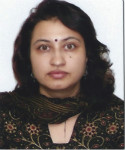| 个人简介 | |
|---|---|
 Prof. Jyotsna Punj Professor of Anaesthesiology, Pain Medicine and Critical Care, All India Institute of Medical Sciences, India |
|
| 标题: Ultrasound guided stellate ganglion block for vasculitis in pediatric age group with auto-immune disorders | |
| 摘要: Stellate ganglion blocks are given frequently to reverse the effects of vasculitis. In pediatric age group vasculitis of fingers and toes is frequently the first symptom of autoimmune disorders like systemic sclerosis. In our hospital, these patients are frequently referred to the pain clinic for stellate ganglion blocks to reverse the effects of vasculitis and prevent gangrene and finger digit loss. In this article we will discuss the advantages of performing this block by ultrasound technique for safety and effectiveness. There are three techniques to perform stellate ganglion block: Landmark technique, fluoroscopic guidance and ultrasound guidance. Landmark technique involves palpating the prominet C6 chassaignes tubercle by the side of the trachea at the level of cricoid cartilage from where a thin needle is passed perpendicularly to hit the tubercle. The needle is then withdrawn slightly and after negative aspiration local anesthetic, about 10 ml is injected. Disadvantages of Landmark technique are that it relies on feeling the C6 chassaignacs tubercle which might be difficult in obsese patients or patients with edema. As the injection is carried out at the level of C6 which is actually the position of middle cervical ganglia we have to give a relatively larger volume of LA and rely on passage of LA to the lower level of C7 where the stellate ganglion is present. It’s a blind technique thus there could be injury of the surrounding structures like vagus nerve,esophagus (if injection given on left side) , or surrounding vessels like vertebral artery. Moreover, the injection might not be in plane b/w carotid sheath & longus colli which could result in block failure. If the inejctate is inside the carotid sheath then this can result in recurrent laryngeal nerve palsy which includes hoarseness and if vagus nerve is affected then there could be difficulty in breathing especially if bilateral injection is performed. Fluoroscopic technique also relies on identification of C6 tubercle followed by visualization of the spread of the radioopaque contrast. The disadvantages of the anatomical technique remain with this method. Advantage of the ultrasound technique is that visualization of the needle trajectory and the needle tip along with the spread of the LA makes it useful for correct placement of the block. Needle tip can be correctly placed between the plane of longus colli muscle and the carotid sheath at the level of C7 rather than C6 , and thus a successful block can be performed with smaller volumes of drug. Advantages of USG vs fluoroscopy/ landmark technique is that it’s a real time block with correct identification of the fascial planes and identification of sensitive surrounding vascular structures like Inferior thyroid /cervical /vertebral/carotid vessels and identification of esophagus. We can also see the real time spread of the LA and this is easier in obese patients and safer in patients with deranged coagulation. The number of injections required by each patient varies and thus the frequency of the block along with the total number of injections needed varies with each patient and this has to be individualized. The frequency at the initial state may be more than the latter. In our hospital, apart from adult patients, we frequently are requested to perform this block in pediatric age groups who have vasculitis secondary to autoimmune disorders. The blocks are performed either in the clinic room or in the operation theatre. With good counselling in the presence of parents, the children are cooperative in administration of this block without general anesthesia. The speech paper will focus on teaching administration of ultrasound stellate ganglion block in pediatric age group. | |
| 简介: Achievements 1. Associate editor of IJPUT, Russian Journal of Obstetric Anesthesia, Russian Journal of Critical Care 2. Chief coordinator of various workshops on airway management, BLS, ACLS and ultrasound nerve blocks at various national and international forums. 3. Chief MD examiner at AIIMS and other hospitals 4. Expert for selection of faculty at various hospitals Papers published: More than 80 papers published in indexed journals/ Citations: 115 Lectures delivered as Invited Faculty: more than 50 at various national and international forums Chapter in Book: Research Projects: Ongoing and completed Research Projects from ICMR and AIIMS | |
